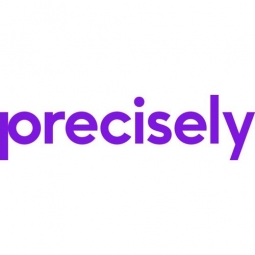Download PDF
Stabilizing an Avalanche of Data: Comcast's Journey with Data360 Analyze
Technology Category
- Automation & Control - Human Machine Interface (HMI)
- Functional Applications - Enterprise Resource Planning Systems (ERP)
Applicable Industries
- Equipment & Machinery
- Finance & Insurance
Applicable Functions
- Logistics & Transportation
- Quality Assurance
Use Cases
- Fraud Detection
- Leasing Finance Automation
Services
- System Integration
The Challenge
Comcast Corporation, the second largest broadcasting and cable television company in the world by revenue, was facing significant challenges due to the volume and variety of operational and billing data. With over 20 million customers across 40 states, the company needed to establish standardized processes and automate data flows to overcome a wide range of billing, finance, compliance, supply chain, and marketing challenges. In 2009, the company was dealing with massive amounts of data that were causing major revenue assurance challenges. The customer billing review interface required the processing of a billion records every month, within very tight timeframes. The company’s decentralized accounting and finance operations, with 20 different regions and 30 different accounting practices, further compounded these issues.
The Customer
Comcast Corporation
About The Customer
Comcast Corporation is the second largest broadcasting and cable television company in the world by revenue, and the largest U.S. home internet and cable television provider. In the U.S., Comcast provides residential and commercial services to more than 20 million customers across 40 states. The company was facing significant challenges in managing the volume and variety of operational and billing data. With a decentralized accounting and finance operations spread across 20 different regions and 30 different accounting practices, the company was struggling with major revenue assurance challenges.
The Solution
Comcast sought an agile data preparation solution that could natively connect to a wide range of data sources, and join, blend, transform, analyze and publish results into BI visualization tools. They needed a tool that could interface from the billing system to the general ledger, present accurate data while identifying anomalies in a clear and graphic manner, and handle extremely large data volumes. After exploring both internal and external options, Comcast chose Data360 Analyze as an enterprise solution for data preparation and analysis for its scalability, flexibility and ability to quickly handle, control and accurately present revenue information. Data360 Analyze was initially deployed within the accounting and finance areas to automate data flows and streamline revenue assurance in the customer billing revenue interface. The solution was then implemented in diverse areas such as billing assurance, commission payments, fraud detection, supply chain inventory tracking, revenue share accruals and payments, and franchise fee regulatory payments.
Operational Impact
Related Case Studies.

Case Study
Smart Water Filtration Systems
Before working with Ayla Networks, Ozner was already using cloud connectivity to identify and solve water-filtration system malfunctions as well as to monitor filter cartridges for replacements.But, in June 2015, Ozner executives talked with Ayla about how the company might further improve its water systems with IoT technology. They liked what they heard from Ayla, but the executives needed to be sure that Ayla’s Agile IoT Platform provided the security and reliability Ozner required.

Case Study
IoT enabled Fleet Management with MindSphere
In view of growing competition, Gämmerler had a strong need to remain competitive via process optimization, reliability and gentle handling of printed products, even at highest press speeds. In addition, a digitalization initiative also included developing a key differentiation via data-driven services offers.

Case Study
Predictive Maintenance for Industrial Chillers
For global leaders in the industrial chiller manufacturing, reliability of the entire production process is of the utmost importance. Chillers are refrigeration systems that produce ice water to provide cooling for a process or industrial application. One of those leaders sought a way to respond to asset performance issues, even before they occur. The intelligence to guarantee maximum reliability of cooling devices is embedded (pre-alarming). A pre-alarming phase means that the cooling device still works, but symptoms may appear, telling manufacturers that a failure is likely to occur in the near future. Chillers who are not internet connected at that moment, provide little insight in this pre-alarming phase.

Case Study
Premium Appliance Producer Innovates with Internet of Everything
Sub-Zero faced the largest product launch in the company’s history:It wanted to launch 60 new products as scheduled while simultaneously opening a new “greenfield” production facility, yet still adhering to stringent quality requirements and manage issues from new supply-chain partners. A the same time, it wanted to increase staff productivity time and collaboration while reducing travel and costs.

Case Study
Integration of PLC with IoT for Bosch Rexroth
The application arises from the need to monitor and anticipate the problems of one or more machines managed by a PLC. These problems, often resulting from the accumulation over time of small discrepancies, require, when they occur, ex post technical operations maintenance.

Case Study
Robot Saves Money and Time for US Custom Molding Company
Injection Technology (Itech) is a custom molder for a variety of clients that require precision plastic parts for such products as electric meter covers, dental appliance cases and spools. With 95 employees operating 23 molding machines in a 30,000 square foot plant, Itech wanted to reduce man hours and increase efficiency.





